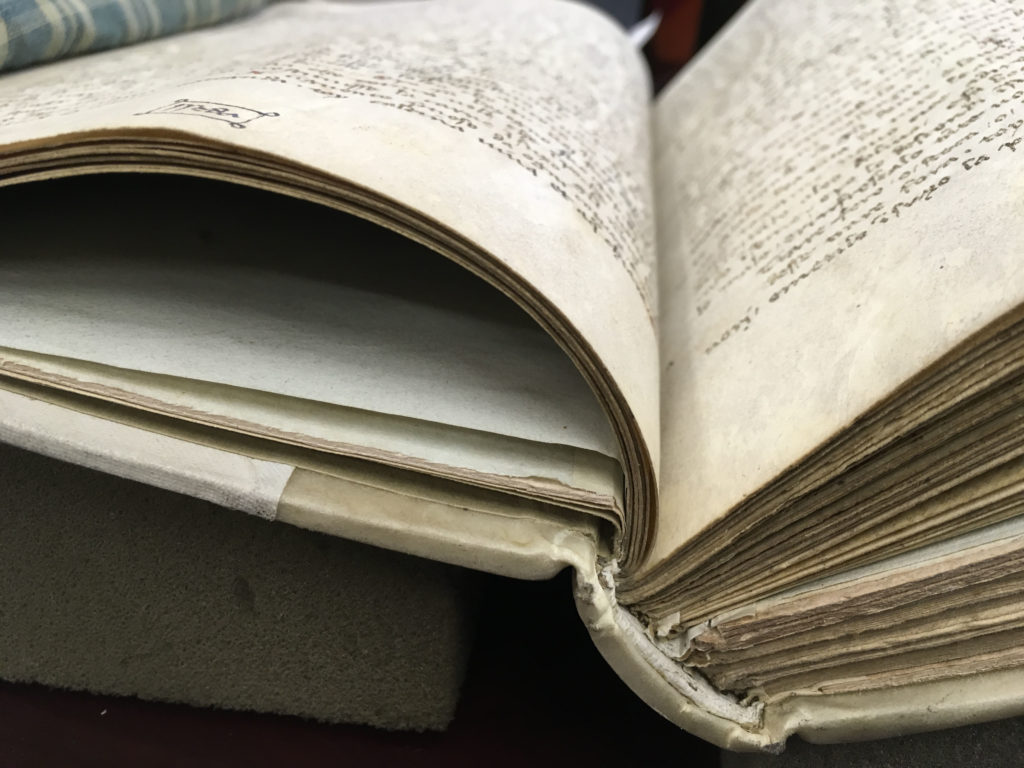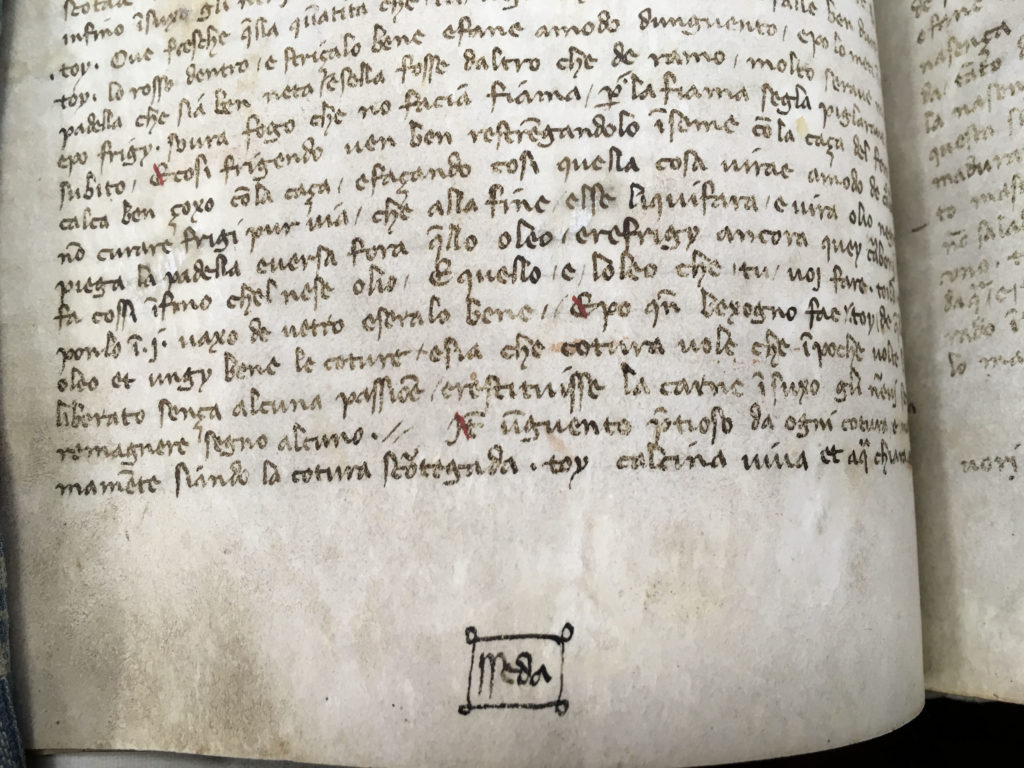What are quires and catchwords, and why are they important?
If you look closely at the first image, you will see the quires. Quires are gatherings of folio (leaves), usually 8 leaves, which are then bound into a book. Last week I mentioned that the first folio in 10a 131 is missing. This is not uncommon in medieval manuscripts. When Wickersham bought the manuscript in Italy, it was comprised of 2 volumes, each bound in 19th-century paperboard. We cannot be certain when the first leaf went missing, but the flyleaf seems to be of 18th- or 19th-century paper, so it is probably safe to assume it was missing well before it was bound in the paperboard.
Another way to distinguish the end and beginnings of quires is to search for catchwords. A catchword is a word on the bottom of the page to indicate the first word of the next page, which would help the binder to know which quire came next. Catchwords are located at the bottom of a leaf in the margin, and are often large and bordered by a decorative box to separate it from the main text (see image 2).


